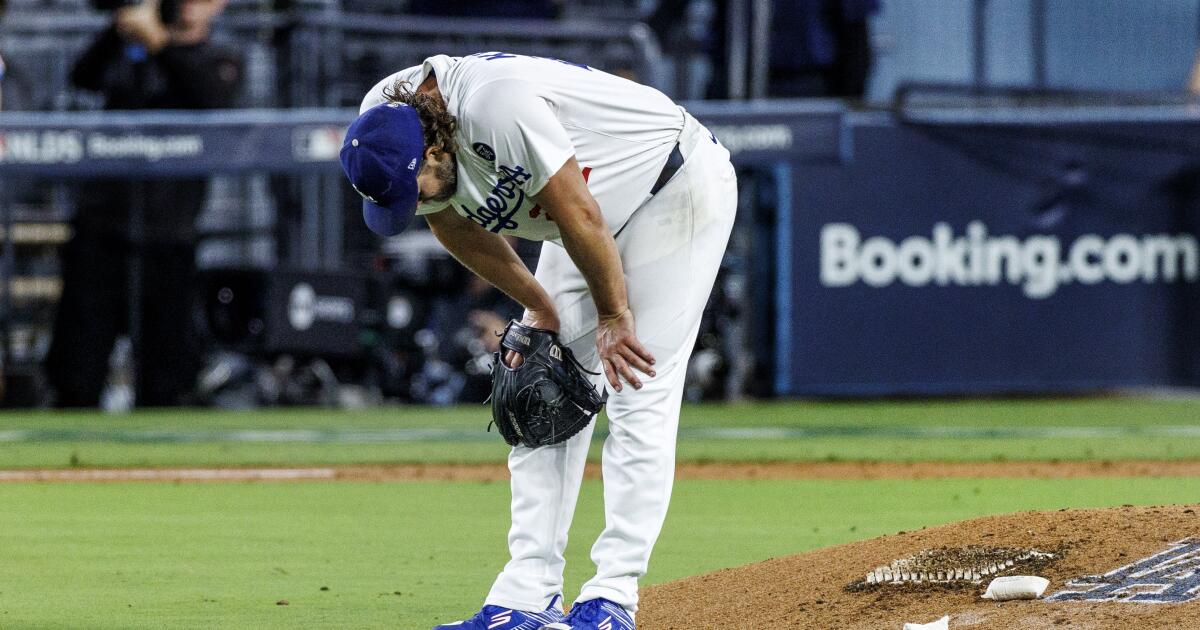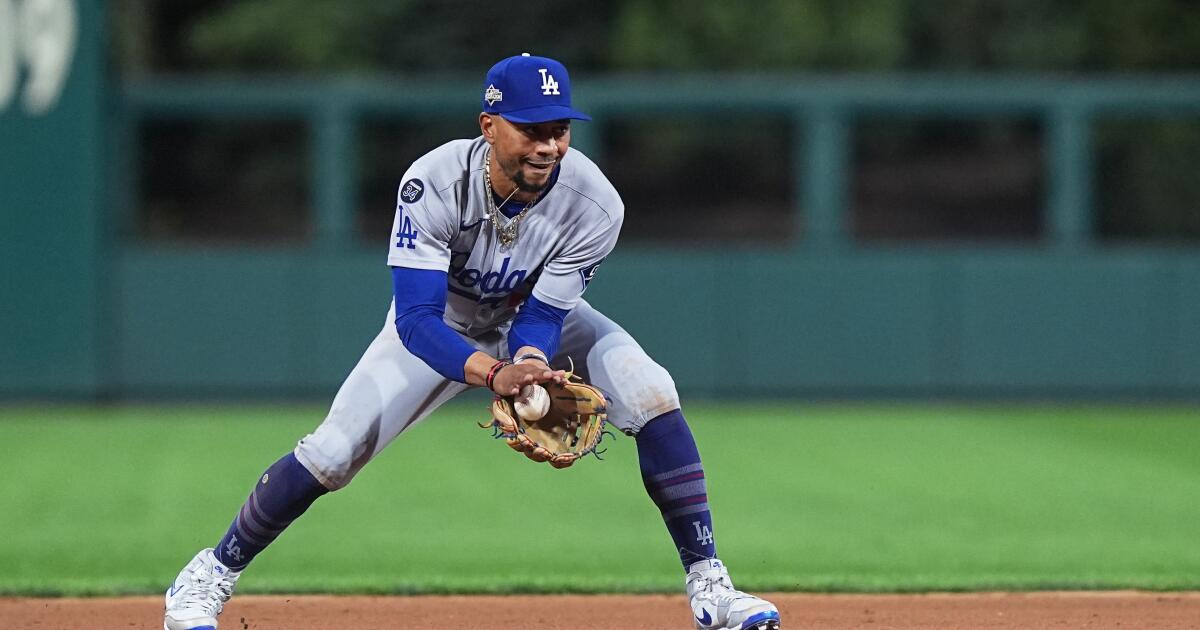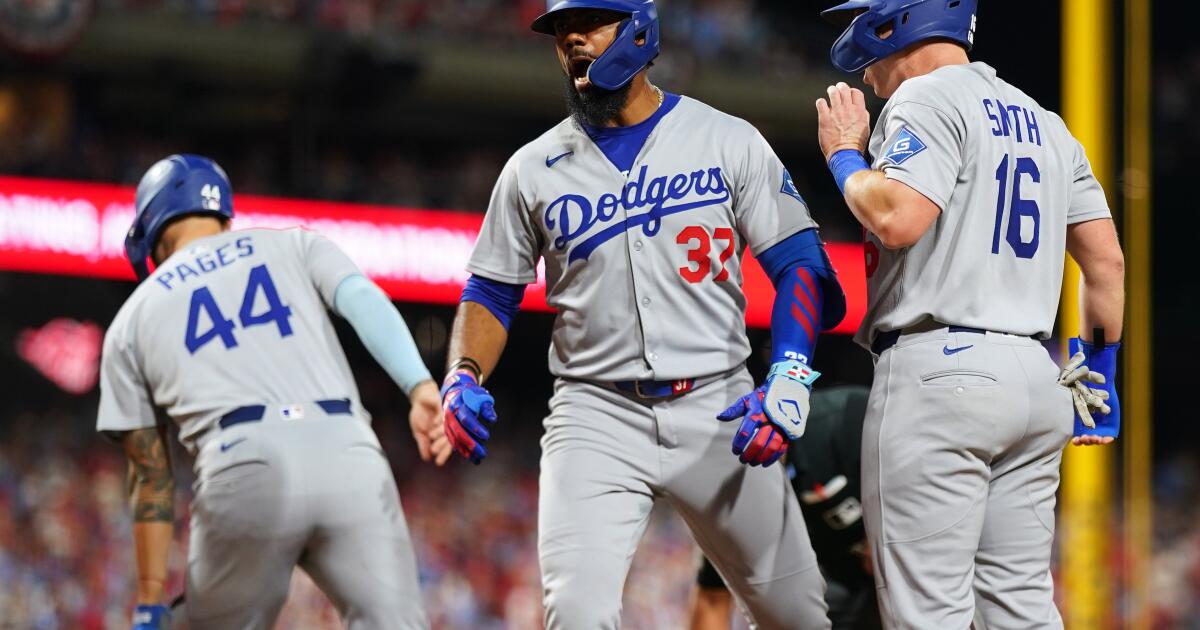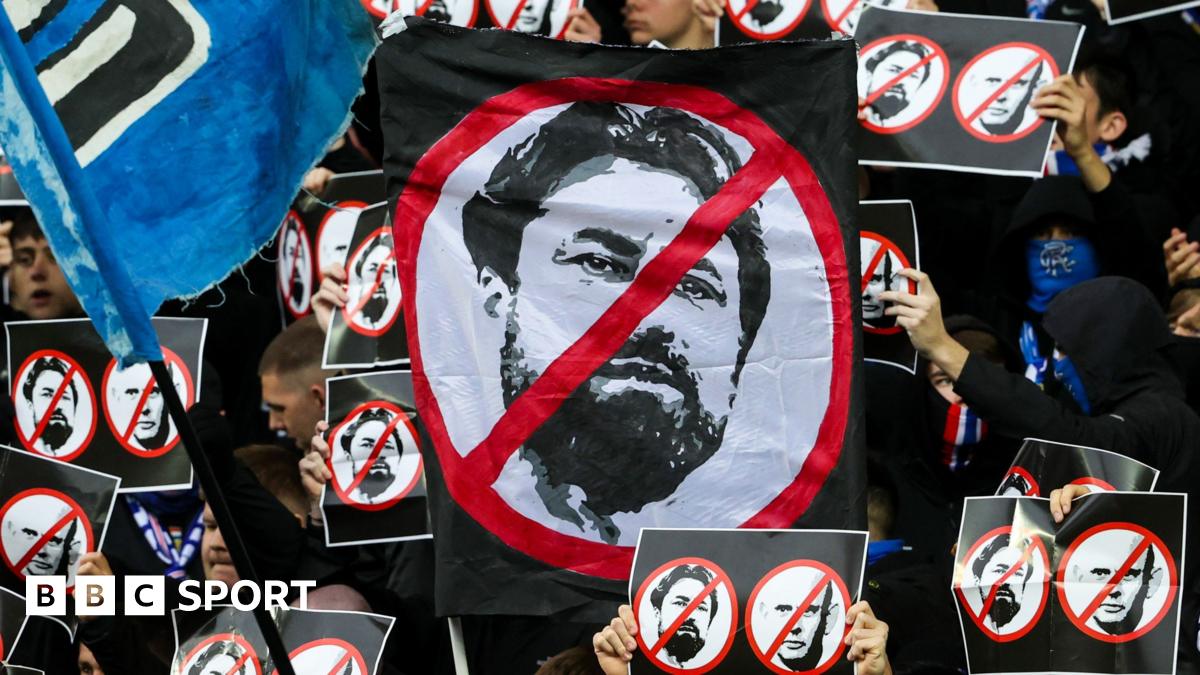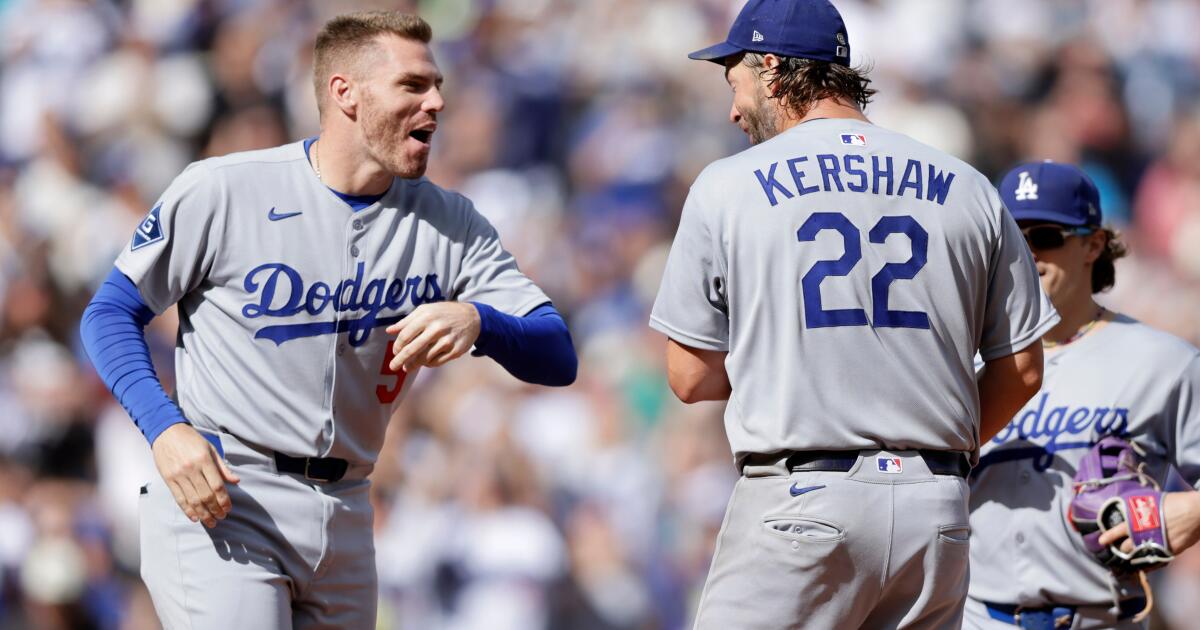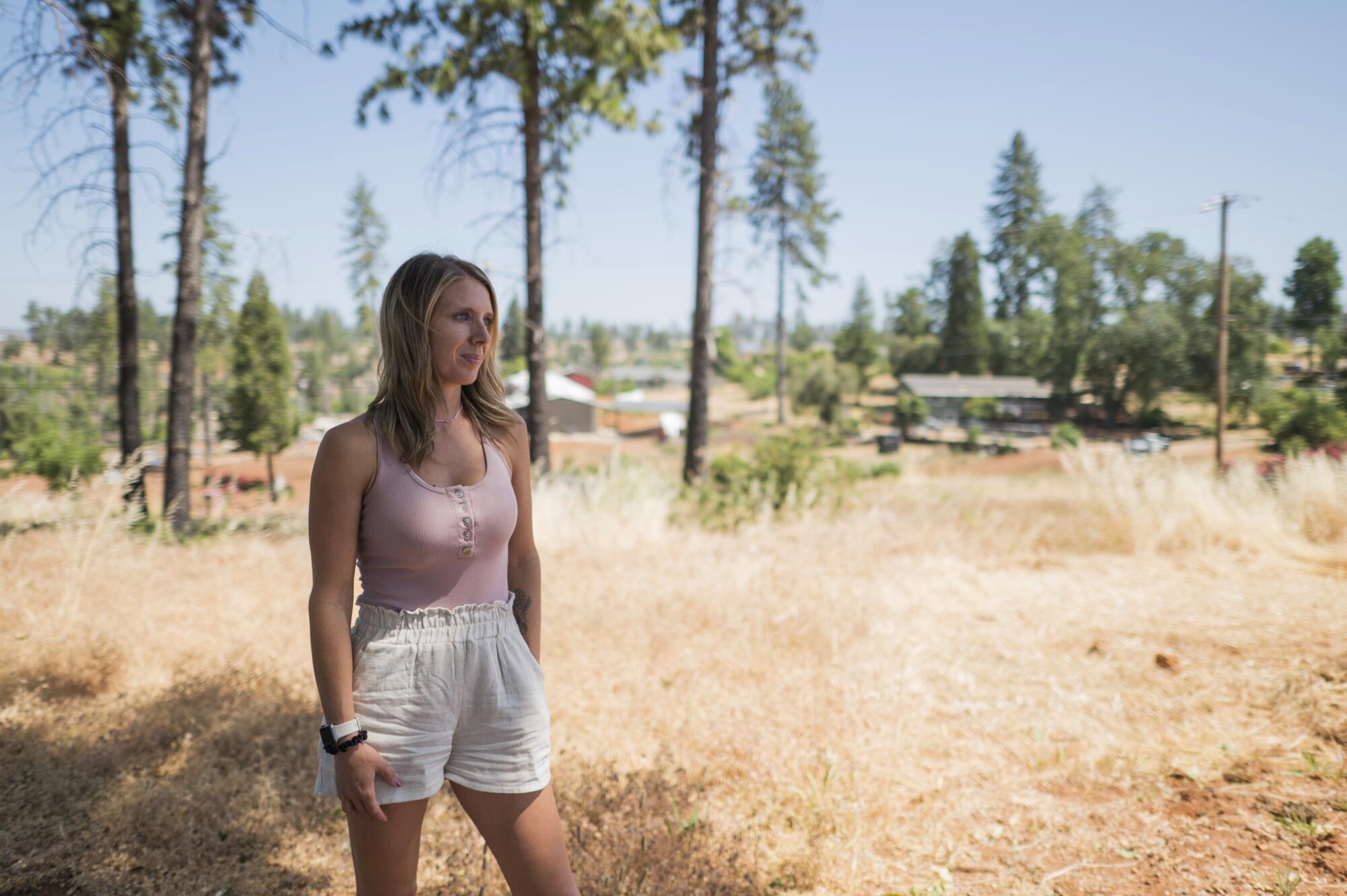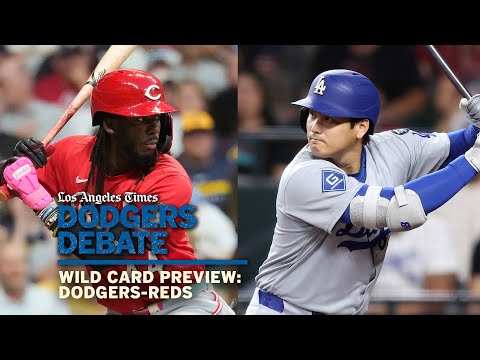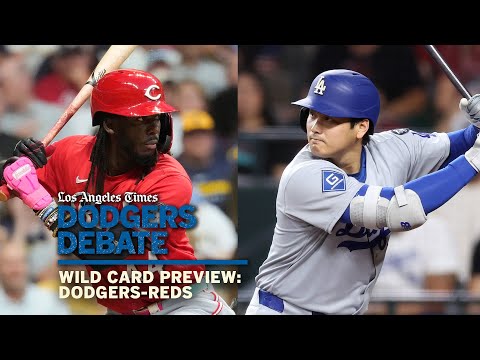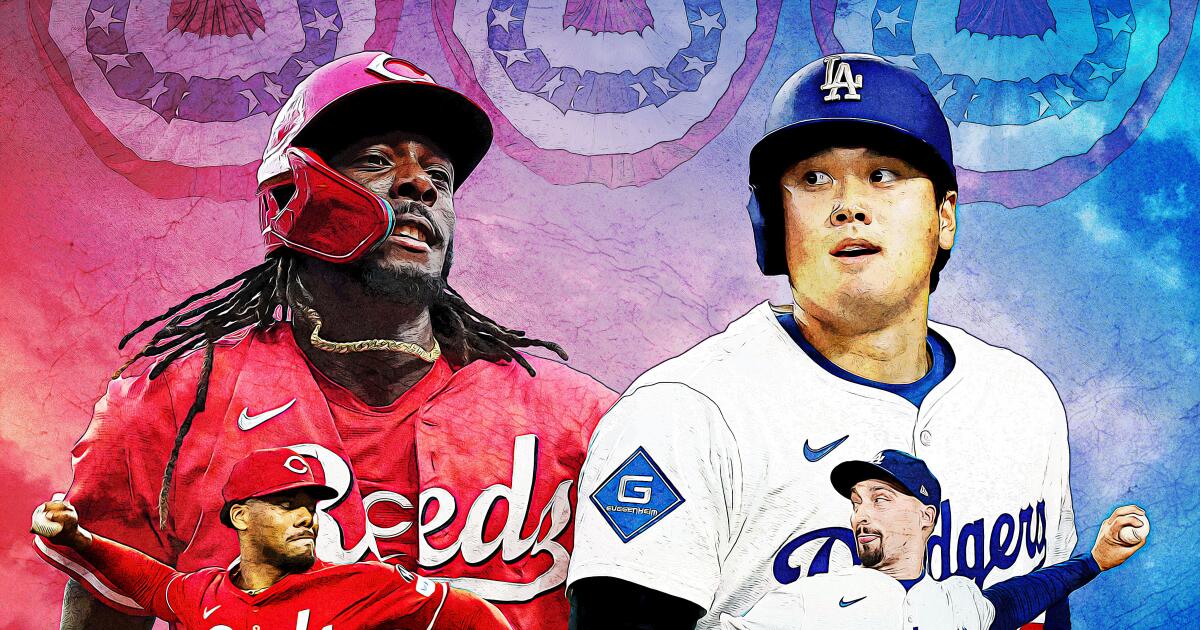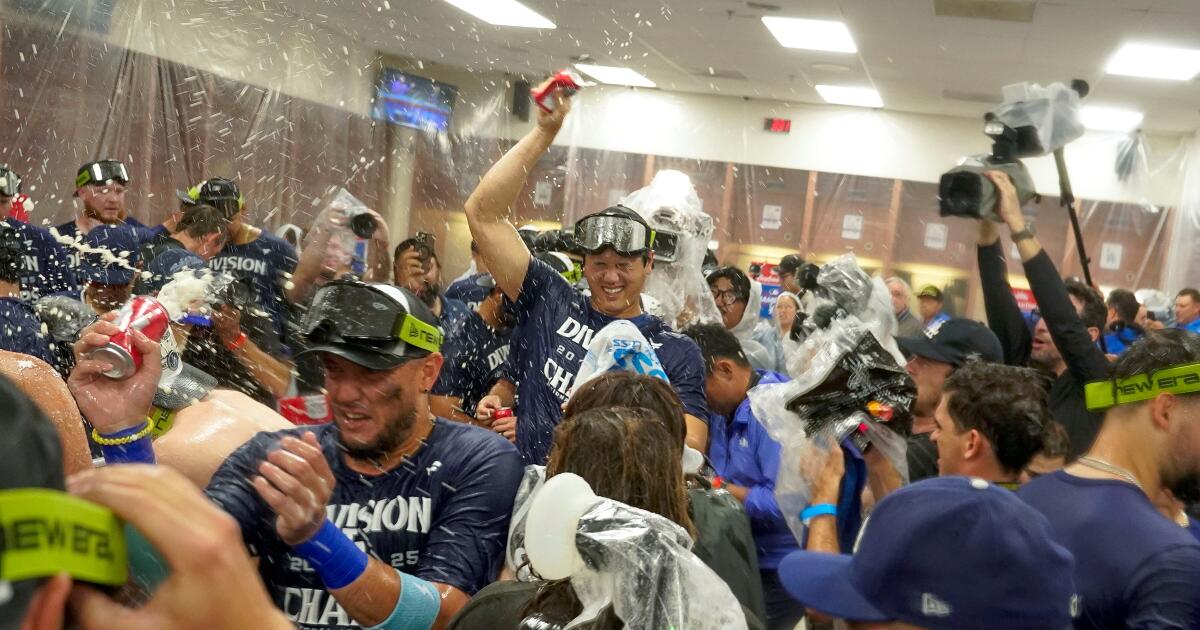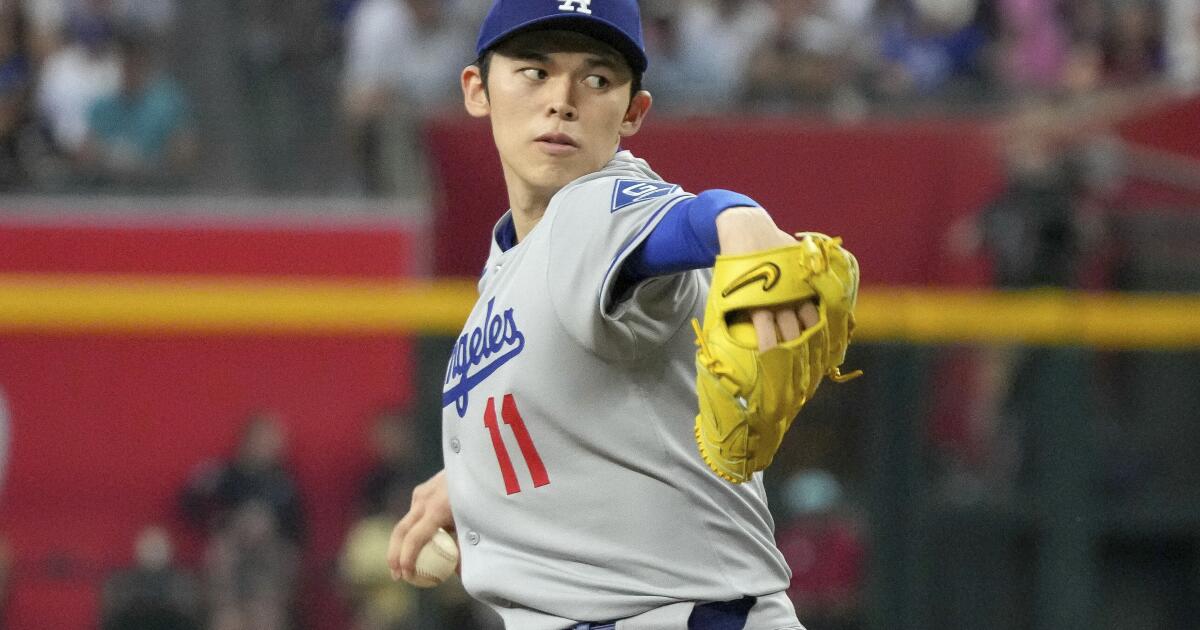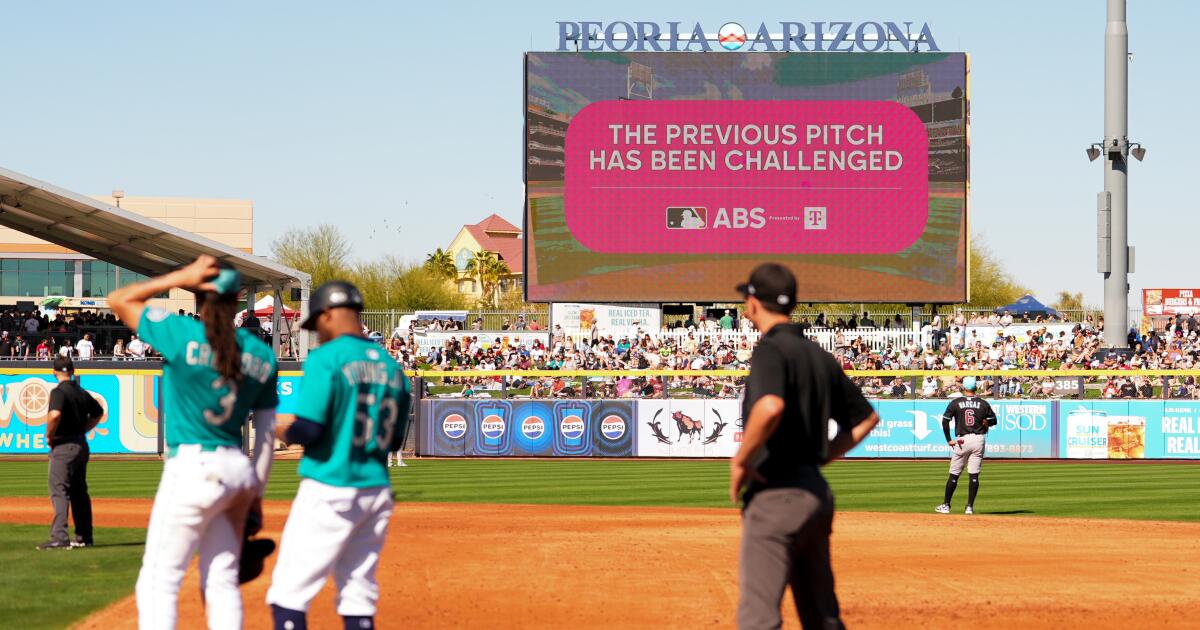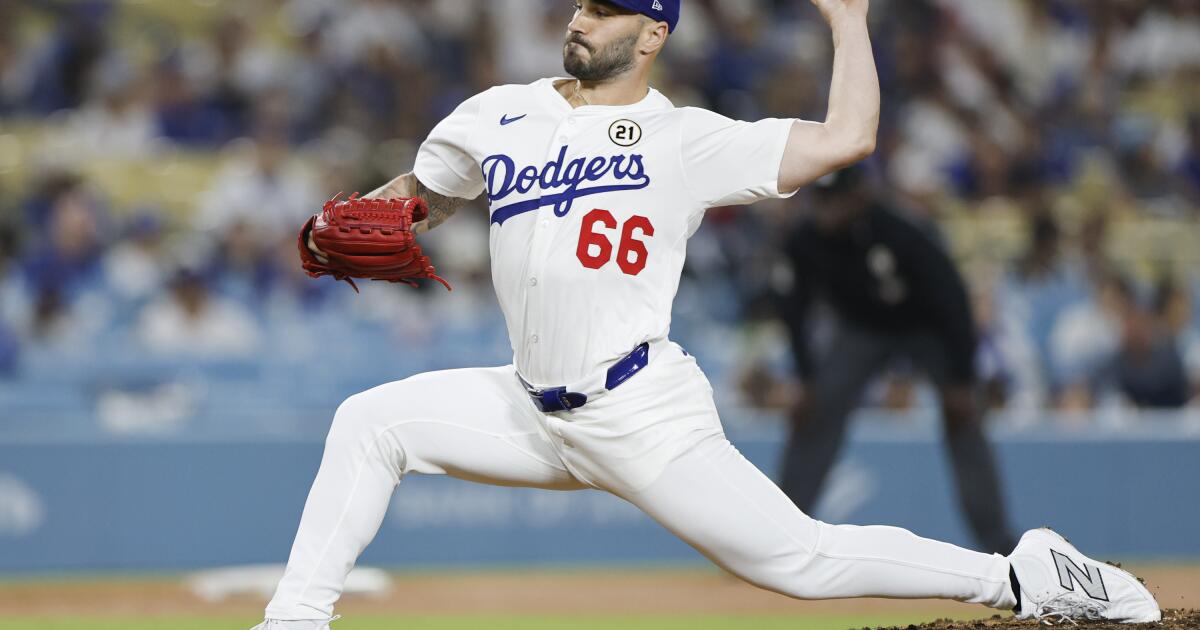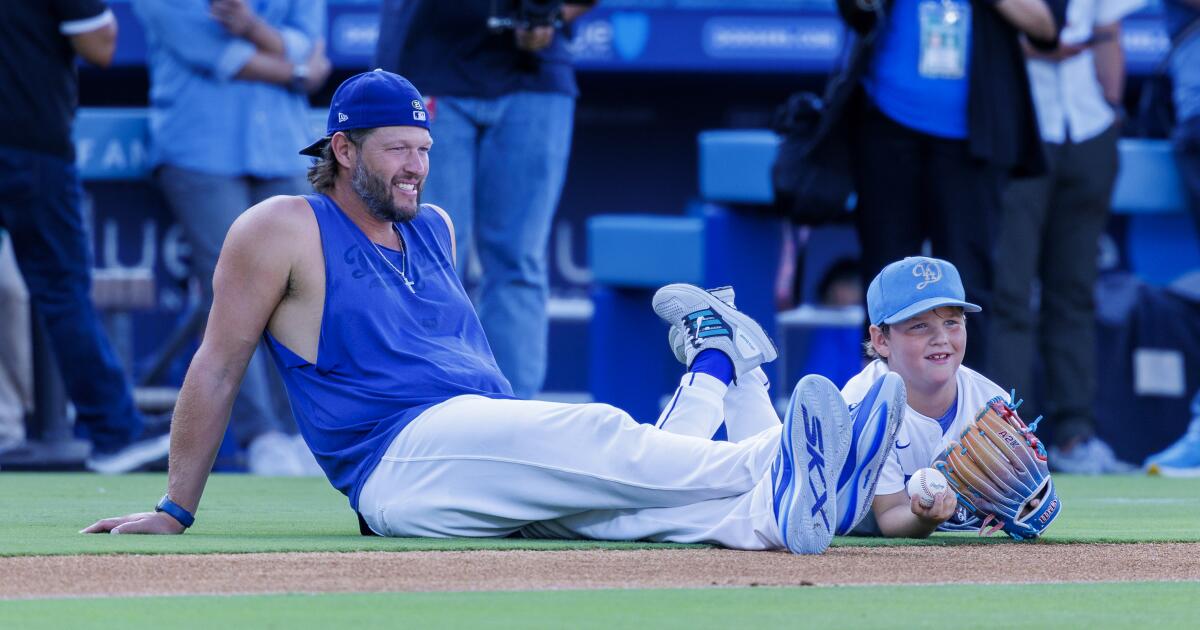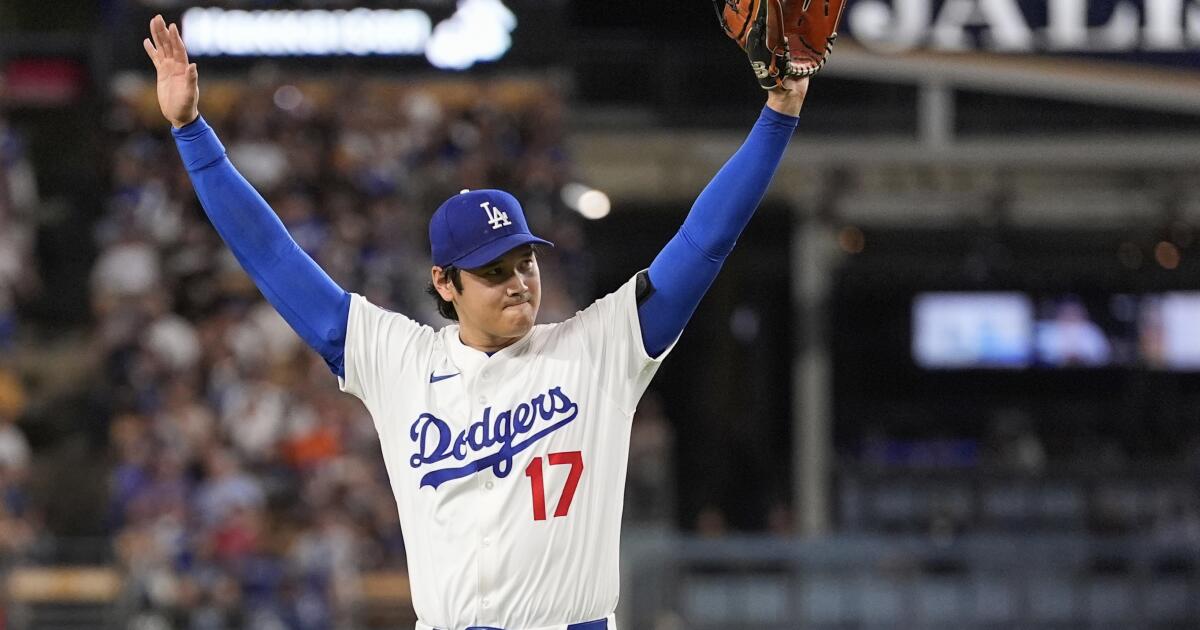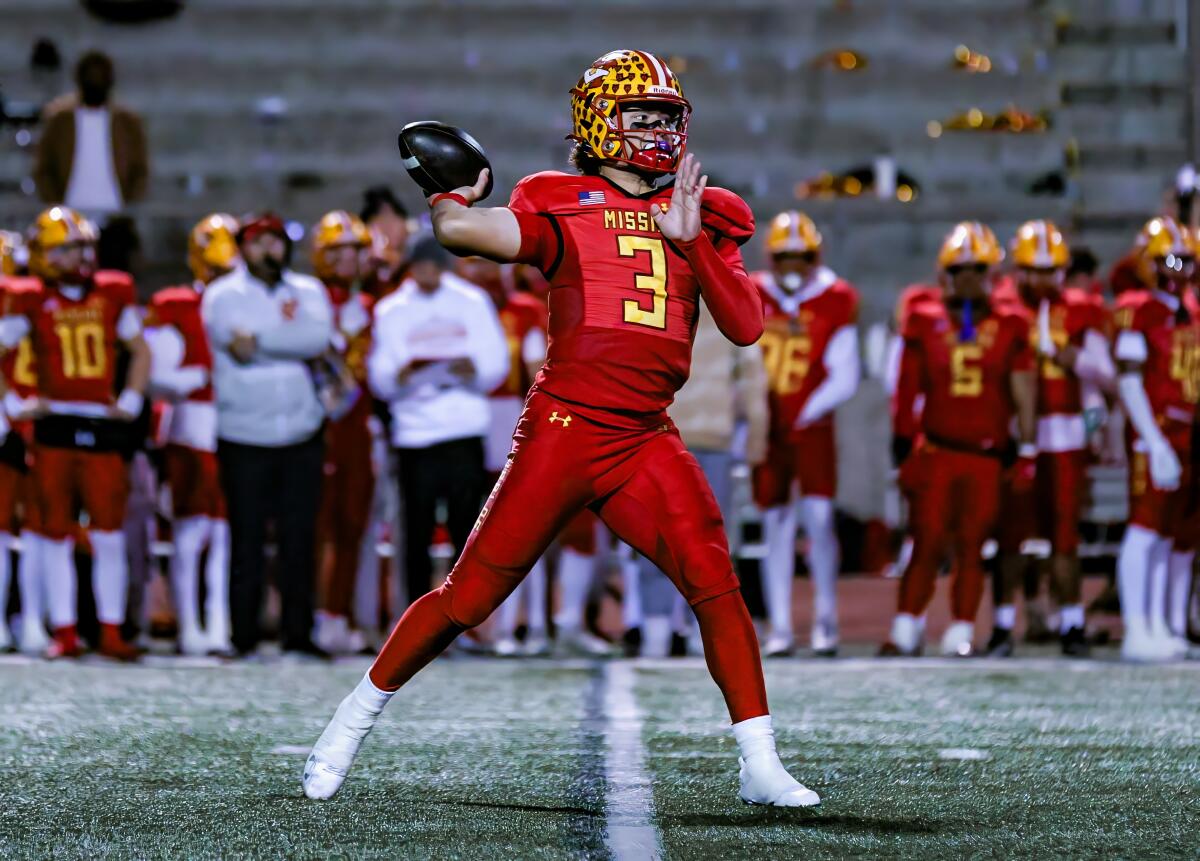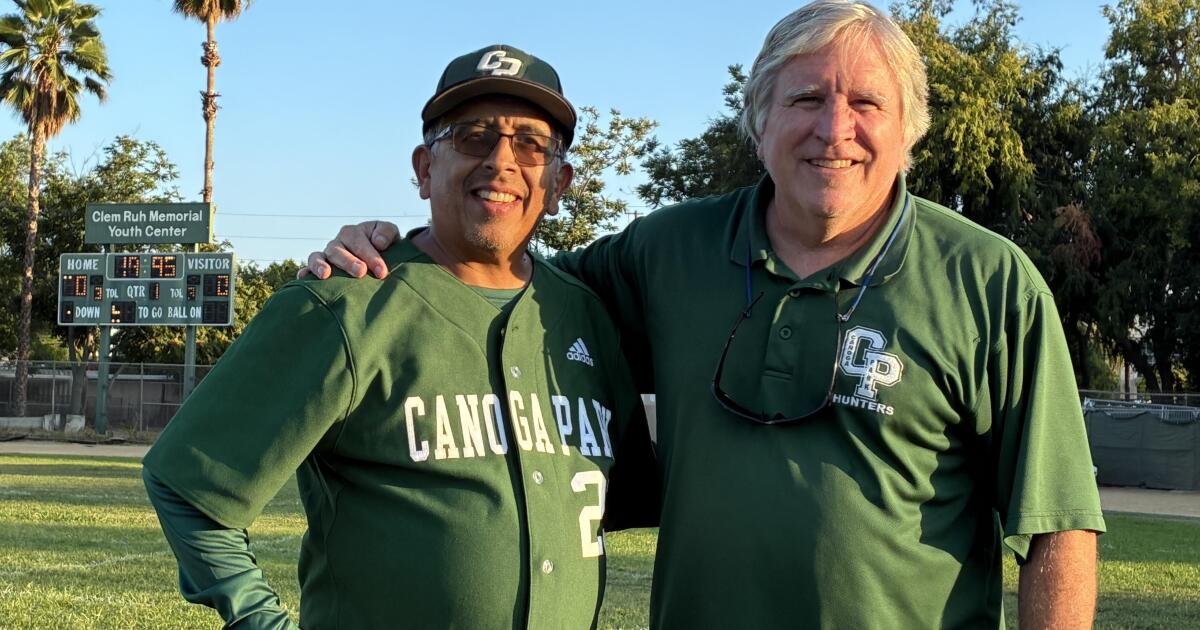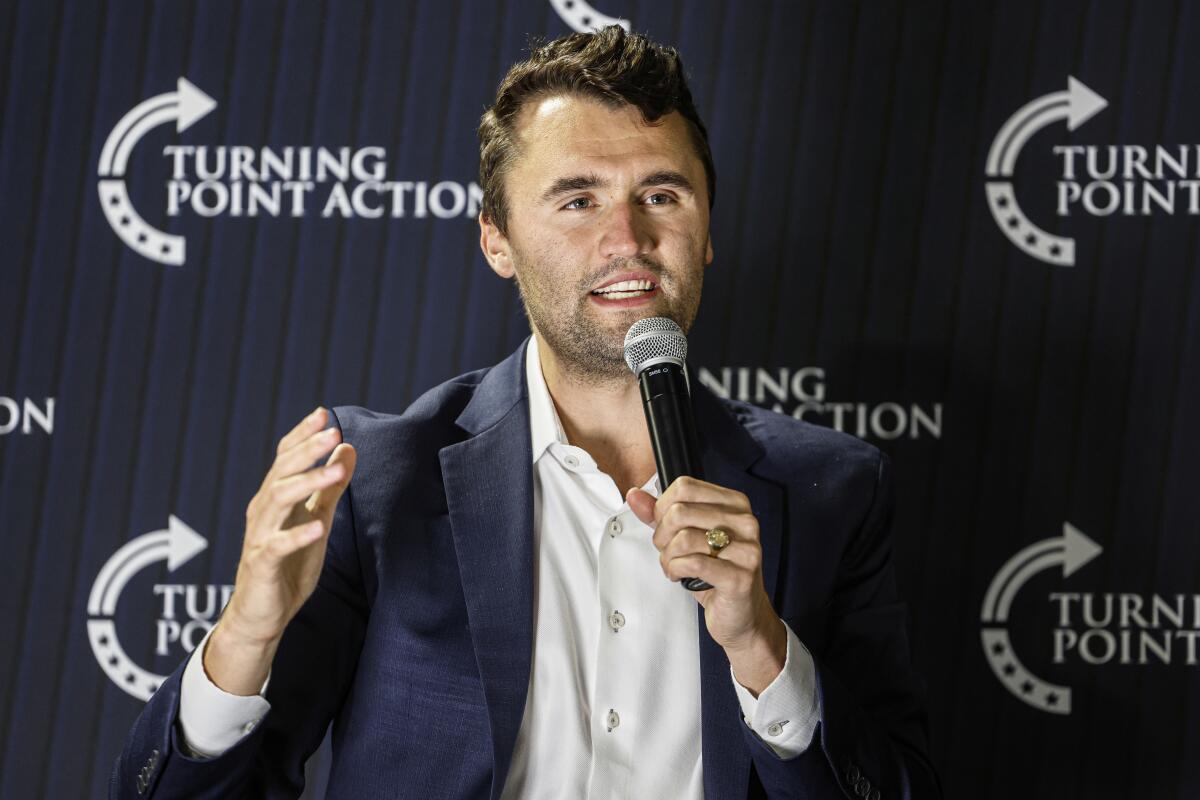Dodgers Dugout: You didn’t think it was going to be that easy, did you?
Hi and welcome to another edition of Dodgers Dugout. My name is Houston Mitchell, and we shouldn’t be so surprised that the Phillies came back strong in Game 3.
—After all, the Phillies didn’t win 96 games by accident.
—If Kyle Schwarber‘s bat is awake, then it got a lot harder for the Dodgers to win.
—Now, someone needs to wake up Shohei Ohtani‘s bat. He is one for 14 with six strikeouts in the NLDS.
—Some fans want the Dodgers to start Ohtani on the mound tomorrow. I disagree. Tyler Glasnow is the right call, with Blake Snell starting Game 5 if necessary. Game 4 isn’t enough rest for Ohtani.
—Ohtani is swinging at pitches well out of the zone, which is what he does when he’s in a slump. Hopefully it is short-lived.
—Ohtani is now hitting .214 in 21 career postseason games.
—The Dodgers had a chance to put the Phillies in a big hole in the first inning. Mookie Betts tripled with one out, and you need to score that run in the postseason. But Teoscar Hernández struck out, Freddie Freeman was hit by a pitch and Will Smith struck out.
—Betts is hitting .409 this postseason.
—I know I picked Dodgers in five, but you don’t really want to go back to Philadelphia after being up 2-0.
—Someone please let Andy Pages know that it’s OK to get a hit. When you have Miguel Rojas batting for you, it’s not a good sign.
—I still like the TBS announcers, but play-by-play man Brian Anderson can’t tell if a fly ball is a home run or not.
—Dodgers fans were taught this by Vin Scully: Don’t watch the ball, watch the outfielder.
—It was tough to see Clayton Kershaw left out there to take a beating.
—I didn’t have Kershaw penciled in as the man who would fill the Brent Honeywell role this postseason.
—For those of you irate that Dave Roberts apparently punted the game away by leaving Kershaw out there, have we already forgotten last season? He did the same thing during the postseason then, including during the World Series.
—Seems to me Kershaw deserves better than that role, but we have no idea what conversations took place between Roberts and Kershaw before the series, or Game 3. Perhaps Kershaw volunteered to take one for the team. He is the type of guy who would do that.
—“He just didn’t have a great slider tonight,” Roberts. “Clayton pitches off his slider. He was working behind, too. The command wasn’t there tonight.”
—One reason Kershaw was left out there: The Phillies have a lot of left-handed hitters, and Tanner Scott wasn’t available for personal reasons. Alex Vesia pitched the last two games. Kershaw was the only left-hander available at that time.
—Kershaw has a career 4.63 postseason ERA in 196.1 innings.
—Yoshinobu Yamamoto didn’t have it in Game 3. Only two strikeouts, and didn’t fool many batters. That’s what happens sometimes.
—It really isn’t, but for some reason Game 4 feels like a must-win game, doesn’t it?
—Maybe Ben Rortvedt is the Dodgers’ good-luck charm and needs to start every game, with Will Smith coming in around the fifth inning.
—Judging by the response I got, I indeed am the only person who like the Limu emu (and Doug).
—Anthony Banda looked strong in his brief outing.
—To beat Phillies ace Cristopher Sánchez today, the Dodgers need to do what they did to him in Game 1 (and something they didn’t do in Game 3): Work the count, drive up his pitch count and get him out of the game by end of the sixth inning.
—“Obviously there’s still a lot of pressure on us, but pressure is a privilege,” Betts said. “We’re going to do what we always do. Tomorrow is a new day.”
—Remember, this is supposed to be fun.
Dodgers postseason stats
Through five games:
Batting
Alex Call, 2 for 2
Ben Rortvedt, .429, 3 for 7, 1 double, 1 RBI, 3 K’s
Miguel Rojas, .375, 3 for 8, 1 RBI
Mookie Betts, .409, 9 for 22, 3 doubles, 1 triple, 3 RBIs, 1 walk, 1 K
Teoscar Hernández, .333, 7 for 21, 1 double, 3 homers, 9 RBIs, 1 walk, 4 K’s
Kiké Hernández, .333, 6 for 18, 2 doubles, 4 RBIs, 2 walks, 3 K’s
Max Muncy, .286, 4 for 14, 1 double, 3 walks, 4 K’s
Will Smith, .250, 2 for 8, 2 RBIs, 1 walk, 4 K’s
Freddie Freeman, .222, 4 for 18, 2 doubles, 3 walks, 4 K’s
Tommy Edman, .200, 3 for 15, 2 homers, 3 RBIs, 5 K’s
Shohei Ohtani, .174, 4 for 23, 2 homers, 5 RBIs, 2 walk, 10 K’s
Andy Pages, .053, 1 for 19, 5 K’s
Dalton Rushing, 0 for 1, 1 K
Team, .278, 10 doubles, 1 triple, 7 homers, 14 walks, 44 K’s, 5.8 runs per game
Two position players on the NLDS roster, Justin Dean and Hyeseong Kim have not come to the plate yet.
Pitching
Roki Sasaki, 0.00 ERA, 2 saves, 2.1 IP, 1 hit, 3 K’s
Tyler Glasnow, 0.00 ERA, 1.2 IP, 2 hits, 2 walks, 2 K’s
Jack Dreyer, 0.00 ERA, 1.2 IP, 2 walks, 1 K
Anthony Banda, 0.00 ERA, 1 IP, 1 walk, 2 K’s
Blake Snell, 2-0, 1.38 ERA, 13 IP, 5 hits, 5 walks, 18 K’s
Yoshinobu Yamamoto, 1-1, 2.53 ERA, 10.2 IP, 10 hits, 3 walks, 11 K’s
Shohei Ohtani, 1-0, 4.50 ERA, 6 IP, 3 hits, 1 walk, 9 K’s
Blake Treinen, 7.73 ERA, 2.1 IP, 4 hits, 2 K’s
Alex Vesia, 9.00 ERA, 2 IP, 2 hit, 2 walks, 2 K’s
Emmet Sheehan, 11.59 ERA, 2.1 IP, 4 hits, 2 walks, 1 K
Clayton Kershaw, 18.00 ERA, 2 IP, 6 hits, 3 walks
Edgardo Henriquez, infinity, 0 IP, 1 hit, 2 walks
Team, 4-1, 4.00 ERA, 2 saves, 38 hits, 23 walks, 51 K’s
Up next
Thursday: Philadelphia (*Cristopher Sánchez, 13-5, 2.50 ERA) at Dodgers (Tyler Glasnow, 4-3, 3.19 ERA), 3 p.m., TBS, truTV, HBO Max, AM 570, KTMZ 1220, ESPN radio
x-Saturday: Dodgers (TBD) at Philadelphia (TBD), 5 p.m., TBS, truTV, HBO Max, AM 570, KTMZ 1220, ESPN radio
*-left-handed
x-if necessary
In case you missed it
Yoshinobu Yamamoto and Dodgers quickly lose control in NLDS Game 3 loss to Phillies
Plaschke: Dodgers blow surefire win in NLDS Game 3 vs. Phillies, and now they could blow the season
‘You get a new game every day.’ Clayton Kershaw tries to put Game 3 debacle behind him
Clayton Kershaw, Mookie Betts talk losing NLDS Game 3
Dodgers are crushed in NLDS Game 3 as bats disappear | Dodgers Debate
Shaikin: Dodgers hope a very-rested Tyler Glasnow can pitch them into the NLCS
And finally
A mental palate cleanser for us all: Vin Scully reads a grocery list. Watch and listen here.
Until next time…
Have a comment or something you’d like to see in a future Dodgers newsletter? Email me at [email protected]. To get this newsletter in your inbox, click here.
